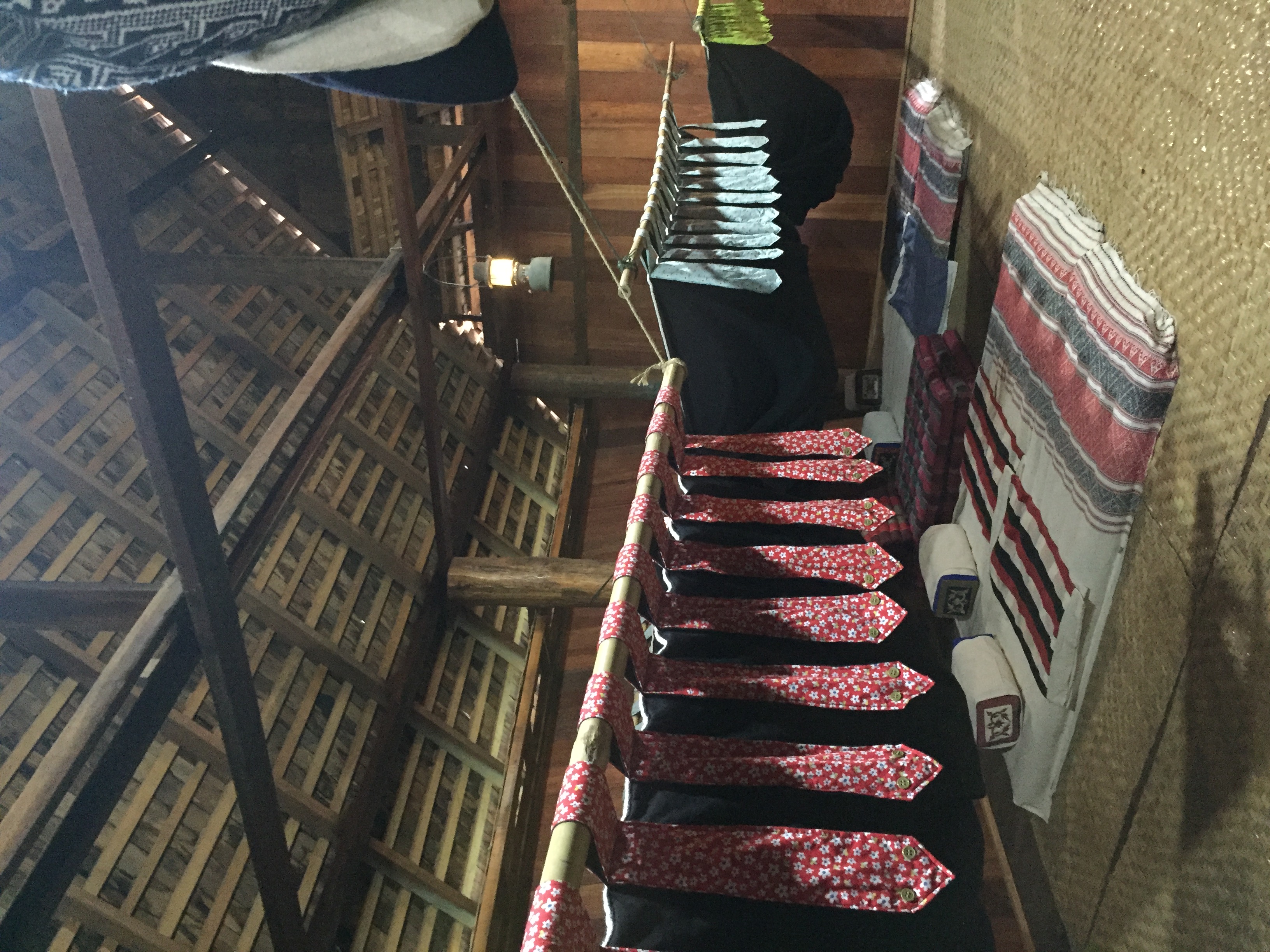อัตลักษณ์และค่านิยมทางชาติพันธุ์ที่ยังคงอยู่ในเรือนไทลื้อ จากอดีตสู่ปัจจุบัน: กรณีศึกษาเปรียบเทียบ อำเภอเชียงคำ จังหวัดพะเยา และบ้านนายางใต้ สปป.ลาว
Main Article Content
บทคัดย่อ
กลุ่มชาติพันธุ์ไทลื้อที่อาศัยอยู่ในบริบทของพื้นที่กรณีศึกษาทั้งสองแห่ง เป็นชุมชนเก่าแก่ที่มีอัตลักษณ์ทางวัฒนธรรมของตน ผ่านค่านิยมด้านทัศนคติที่สอดแทรกไปกับครรลองแห่งวิถีชีวิต ครอบคลุมแนวความคิดจนเกิดเป็นเอกลักษณ์แห่งชาติพันธุ์ที่สะท้อนผ่านองค์ประกอบภายในเรือนอยู่อาศัย ซึ่งเมื่อทำการศึกษา โดยการวิเคราะห์เชิงเปรียบเทียบการแสดงออกทางอัตลักษณ์ของชาติพันธุ์ไทลื้อภายในเรือนที่อำเภอเชียงคำ และบ้านนายางใต้ในปัจจุบันพบว่า ค่านิยมทางชาติพันธุ์เกี่ยวกับการใช้งานพื้นที่ในเรือนได้เปลี่ยนแปลงไป หลงเหลือเพียงค่านิยมด้านคติความเชื่อ โดยเฉพาะคติการใช้พื้นที่นอนบางประการยังคงอยู่และเป็นลักษณะที่ยังปรากฏร่วมกันในปัจจุบัน ซึ่งล้วนมีความเกี่ยวข้องกับองค์ประกอบการตกแต่งภายในที่แสดงออกทางอัตลักษณ์ผ่านผืนผ้าใช้สอยในเรือนทั้งสิ้น นอกจากจะเอื้อประโยชน์ให้ได้ตระหนักถึงอัตลักษณ์ชุมชนแล้วยังเป็นประโยชน์ต่อการอนุรักษ์ และช่วยส่งเสริมการท่องเที่ยวเชิงวัฒนธรรม ที่จะเกิดขึ้นในอนาคตได้
Article Details
เอกสารอ้างอิง
Arnoluk, V. & Kirdsiri, K. (2016). Huean Lue Kalom: Baan Nayangtai Muang Nambak sor por por Laos. (In Thai) [Dwelling houses of Lue-Kalom: Baan Nayangtai, Muang Nambak, Luang Prabang, Lao PDR.]. NAJUA: Architecture, Design and Built Environment, 30, 55-82.
Hlordee, S. (2015). Lokkathat khong chao Tai Lue tee sathon chak kham prasom tee mee kham wa “hua” nai phasa Tai Lue. (In Thai) [Tai Lue worldview reflected from the compound words “hua” containing “head” in Tai Lue language]. Bangkok: FEU Academic Review, 9 (2-4), 46-62.
Keyes, C. F. (1992). Who are the Lue? Revisited ethnic identity in Laos, Thailand and China. Cambridge: Center for International Studies, Massachusetts Institute of Technology.
Moerman, M. (1965). Ethnic Identification in a complex civilization: who are the Lue?. Journal of American Anthropologist, 67 (5), 1215-1230.
Panin, O. (1990). Klao thueng wat ban thin Sipsongpanna ik sak khrang. (In Thai) [On vernacular temples in Sipsongpann]. NAJUA: Architecture, Design and Built Environment, 10, 37-55.
Premjit, S. & Panyakeaw, W. (2015). Tamnan Muang Lue prawattisat phuenthin dandin Chiang Rung, Muang Yong, Muang Singh. (In Thai) [Legend of Lue: local history of Chiang Rung, Muang Yong, Muang Singh]. Chiang Mai: Chiand Mai University Press.
Rakpong, P. (1997). Karn sueksa wattanatham phuenban tai lue nai pak nuea khong sor por por Loas. (In Thai) [The study of Tai Lue culture in Northern Lao PDR.]. Bangkok: Office of the National Culture Committee.
Social Research Institute. (2008). Tai Lue attaluk haeng chattiphan Tai. (In Thai) [Tai Lue: Tai ethnic identity]. Chiang Mai: Chiang Mai University Press.
Sordsongkrit, M. & Wongcharoenkul, C. (2014). Chon klumnoi phao Tai: phi nong phao Tai nai Sibsongpanna Satharanarat Prachachon Chin. (In Thai) [The minority of Dai tribe: Tai tribe relatives in Sibsongpanna, China]. Journal of Cultural Approach, 15 (27), 51-64.
Suriyamegha, O. (2015). Sathanaphab karn sueksa charttiphan Tai Lue tangtae phoso song phan si roi paet sip thueng song phan ha roi si sip. (In Thai) [The state of Tai Lue studies from the 1937s to the 1997s]. Ramkhamhaeng University Journal of Humanities, 34 (1), 127-146.
Wongwigkarn, K., et al. (2005). Khogkarn priapthiap phumpanya nai pattanakarn khong baan pheunthin Tai Lue rawang phuentee lueaksan nai Amphur Chiang Kham Changwat Phayao Prathet Thai kab phuentee lueaksan nai Khwaen Sipsongpanna Monthol Yunnan Satharanarat Prachachon Chin. (In Thai) [A comparative study of wisdom of Tai Lue houses between selected areas in Chiang Kham, Phayao, Thailand and those in Sipsongpanna, Yunnan, China]. Bangkok: Thailand Research Fund.


